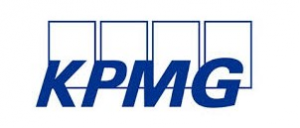The economy in the straitjacket is waiting to loosen up
1.04.2021Company: Amcham
Data from the real economy for February will show a persistent weakness in retail trade due to as trades and services remained closed. Industrial production has been faced with growing demand but also with supply problems, and we expect the February performance to be similar to that in January. Inflation is likely to have accelerated in March, mainly due to higher prices at petrol stations.
Retail sales: One should not have high expectations for retail sales in the near future. Many shops and services remain closed, and with the prospect of an early end to lockdown having faded, consumer confidence has waned since the beginning of the year. Family budgets, on the other hand, are supported by rising average wages, amplified by lower income taxation since the start of the year. However, the unemployment rate is still rising, albeit fairly slowly. Card transactions showed a moderation in the year-on-year decline in February. Car registrations also declined at a slower pace in February than in January. However, car sales were surprisingly high in January, and so the February decline offsets some of the previous increase, although credit card data also showed a slight increase. February 2021 had one extra day compared to February last year, which will slightly reduce the result when not adjusted for calendar effects. For February, we expect a slight month-on-month decline in car sales of 2% and a small increase in retail sales excluding car sales. In year-on-year terms, this would mean a decrease in retail sales excluding car sales of 9.0% (-7.1% adjusted for calendar effects) and a drop in total sales of 8.4% (-5.7 adjusted for calendar effects). It is very unlikely that there will have been a more significant improvement in sales in March, as anti-pandemic measures were tightened further, with schools closing and restrictions on freedom of movement. Even the first days of April do not point to a rapid improvement. We have been expecting a slow opening of the economy since May, however, the economy is still waiting for the population to be immunised, or at least for more effective testing.
Industrial output: Foreign leading indicators show accelerating expansion in production. The Czech Purchasing Managers' Index fell slightly in February, indicating continued growth in industrial production at a slower pace. Businesses in February were in a similar situation as in the previous month, with orders on the rise, but many of the components needed for production missing and many companies suffering from labour shortages. Car production remained in a significant slowdown, as it deepened its year-on-year decline to 15.4% in February from a previous decline of 11.7%. In summary, for February we estimate a month-on-month decline in industrial production of 0.3%, i.e. similar to January (-0.4% mom). On a year-on-year comparison, this would mean growth of 0.5% yoy (NSA and WDA). In March, there will probably have been another slowdown as many carmakers announced production cuts. The question is how strong this impact will be and how long it will last. Anecdotal reports suggest that problems with chip deliveries might last until the autumn. In this light, however, the abovementioned development of foreign leading indicators is remarkable. It is true that these are partly pulled upwards by the lack of components for production, but also by the sub-indices of output, and expectations for the future are growing strongly. The reality might therefore not be so bad.
CPI Inflation: Consumer prices had surprised with higher growth in January, but in February the pace of increase slowed markedly. For March, we are likely to observe higher inflation data again. At gas stations, we expect a month-on-month rise in prices of over 4% due to higher oil prices. For food, this time we expect only small price changes on average. Beer drinkers felt price had increased in March. The month-on-month rise in core inflation that we expect for March should be offset by a fall in holiday prices, which is, however, a seasonal phenomenon, although particularly affected in the current situation of closed services and limited travel options. The declining base effect from last year will cause the year-on-year inflation rate to rise to 2.5% in March and, in the case of core inflation, to 3.4% yoy in March. Even if consumer prices do not rise further, annual inflation will rise further to 2.6% yoy in April. Since June, we have been expecting more moderate price growth and a slight slowdown in the annual inflation rate, especially in the core component. However, the uncertainty on price developments in a situation when the anti-pandemic measures relax will increase.
Regards,
Michal Brožka
Economic and Strategy Research
Komerční banka
trading.kb.cz
Tags: Economics | Finance |







